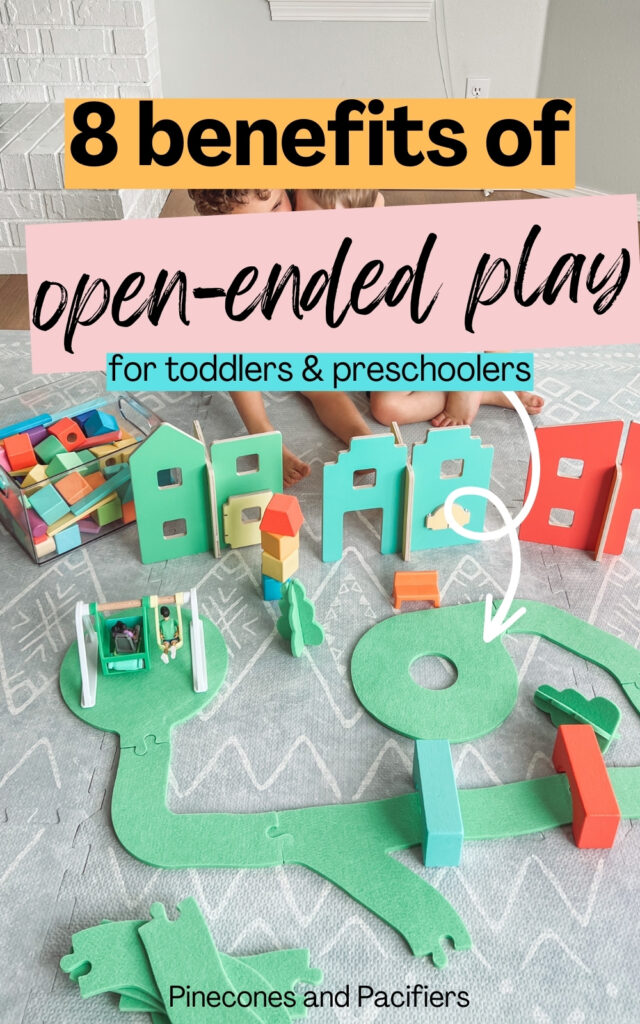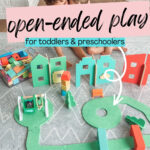Wondering if there are benefits of open-ended play? Open-ended play has some serious benefits for your child’s cognitive and social development! We are big proponents of open-ended play and most of the toys we have not only allow for unstructured free play, but encourage it!
Before we get too far – hi there, I’m Jessica, a mom of three and here to help you make mom life a little more manageable and fun along the way. I love sharing relatable motherhood content, baby and toddler meal ideas, and dig into fun toddler topics (like in this post!). Follow along on Instagram for daily updates!
You might also like these related posts:
- Best Toys for your Baby Registry
- Fun & Easy Toddler Activities for 1-2 Year Olds
- Easy Summer Activity: Paint the Water Table
What is Open-Ended Play?
Open-ended play, also known as unstructured or free play, refers to play experiences that have no fixed outcome or prescribed rules. This type of play encourages children to use their imagination, creativity, and problem-solving skills in a free and exploratory manner.
There are so many wonderful benefits of open-ended play, specifically for toddlers and young children, and contribute to children’s overall development.
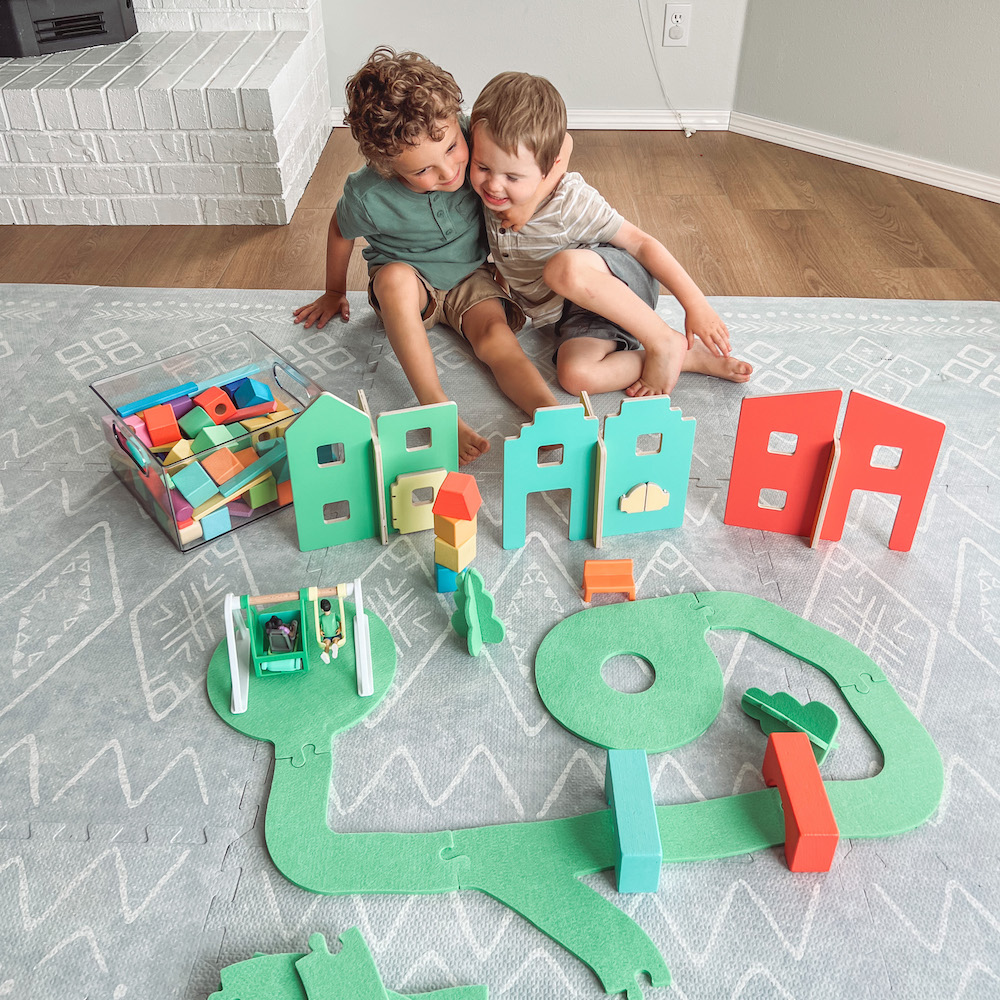
(pictured above is the Lovevery Connector Kit)
What Toys are Best for Open-Ended Play?
The best toys for open-ended play are those that allow for creativity, exploration, and multiple uses. Look for toys that have simple designs, encourage open-ended thinking, and can be used in a variety of ways. Ultimately, the focus should be on providing children with materials that spark their imagination, promote problem-solving skills, and allow for self-expression and open exploration.
Here are some ideas for open-ended toys:
- Blocks (this is our favorite block set with so many uses!)
- Figurines & Peg Dolls
- Dress-up Clothes and Props
- Play Kitchen and Food
- Art Supplies
- Playdough/ Modeling Clay/ Kinetic Sand
- Natural Materials & Loose Parts
The Lovevery Play Kits (save 10% when you prepay for multiple play kits!) are one of our favorite ways to collect open-ended toys and play things. Many of their kits include items mentioned above or include toys that can be repurposed for open-ended play down the road.
>>>> See some open-ended toys in action here!
Benefits of Unstructured Free Play
More Engaging Play
As a mom of three I can honestly tell you that open-ended play takes the cake for getting your kids engaged and playing for extended periods of time!
Open-ended play provides children with the freedom to explore and make their own choices. They have control over their play experiences, which increases their engagement and motivation. When children are given the opportunity to direct their play and follow their interests, they become more invested and engaged in the activity.
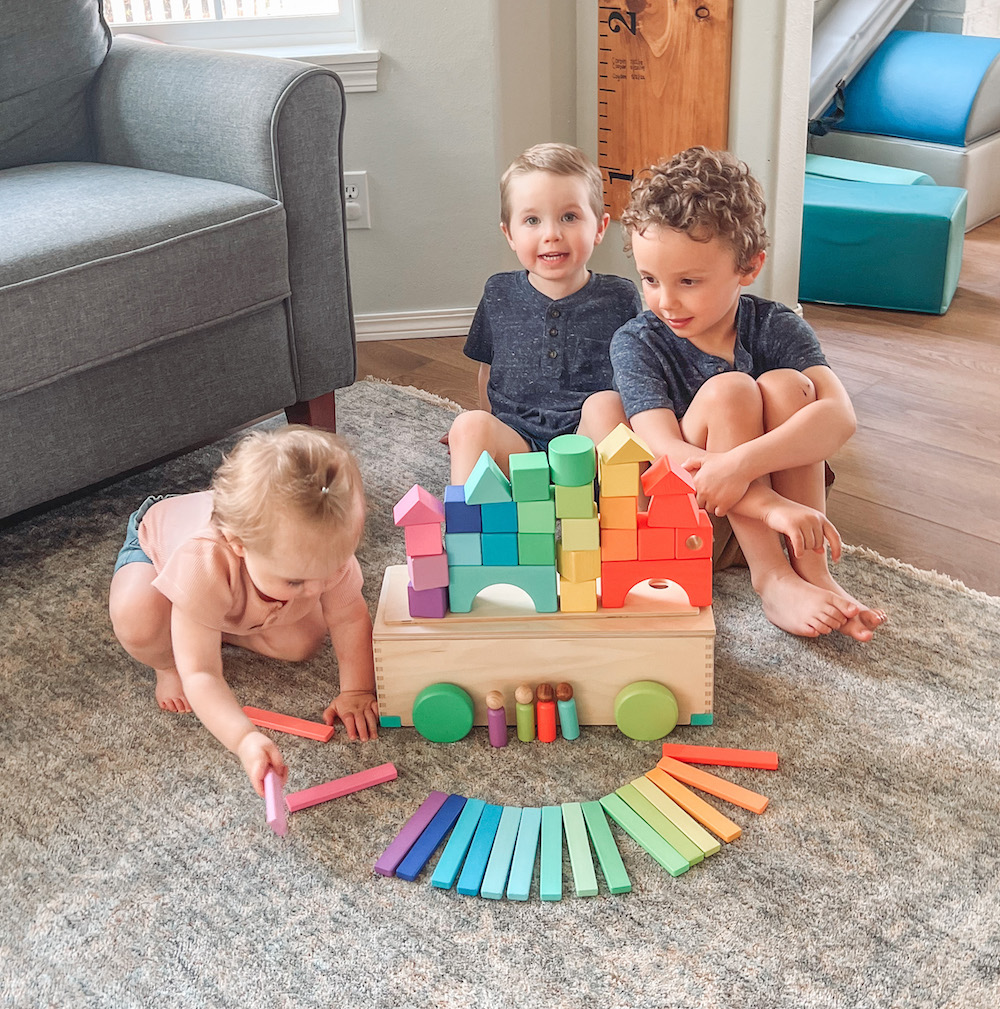
(pictured above is the Lovevery Block Set)
Fosters Creativity
Open-ended play allows toddlers and young children to tap into their boundless imagination! I am always amazed at the ideas and scenerios my children come up with and can really see their gears turning when they engage in open-ended play.
They can transform simple objects into anything they desire, fostering creative thinking and imaginative play scenarios. Whether they’re pretending to be superheroes, creating a make-believe tea party, or building structures with blocks, open-ended play encourages their innate creativity.
Teaches Perseverance
During open-ended play, children may face challenges or obstacles that require persistence to overcome. Whether it’s figuring out how to build a stable structure with blocks or solving a problem within a pretend play scenario, they learn to persevere and keep trying different approaches until they achieve their desired outcome.
Unlike some structured activities that may have one way to reach the desired outcome, open-ended play allows your child to think outside the box and take alternate paths to reach their goal (which also taps into the creativity aspect of free play as well!).
Improves Communication & Social Skills
Open-ended play provides ample opportunities for toddlers to express themselves verbally. As they engage in pretend play or collaborate with peers, they develop their vocabulary, practice language skills, and improve their communication abilities.
Free play also encourages toddlers to interact with peers, siblings, or caregivers. They learn important social skills, such as taking turns, sharing, cooperation, and problem-solving within a social context. This play allows them to practice empathy, communication, and negotiation skills, laying the foundation for healthy social interactions.
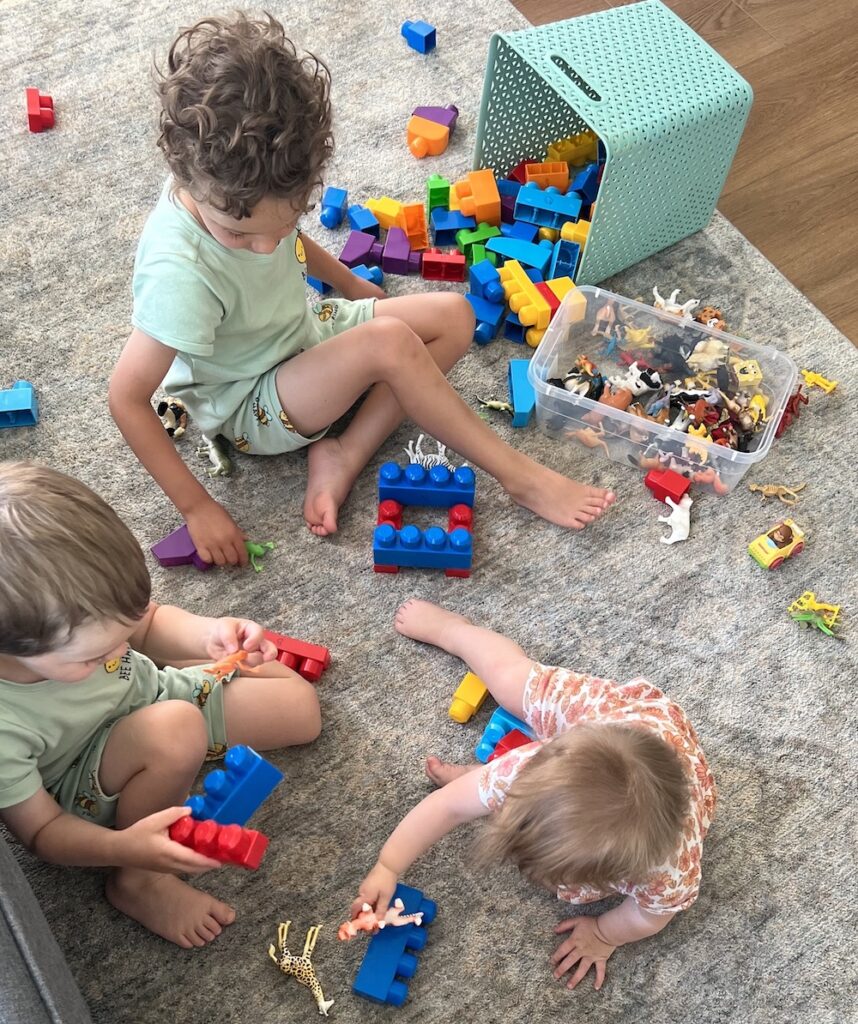
Promotes Problem Solving Skills
During open-ended play, toddlers engage in problem-solving, decision-making, and critical thinking. They learn to make choices, experiment with cause-and-effect relationships, and explore different possibilities. This cognitive stimulation strengthens their cognitive abilities, such as memory, attention, and logical reasoning.
Helps Process Emotions
Toddlers often encounter new emotions and experiences during free play. Open-ended play allows them to explore and express their feelings in a safe and imaginative context.
They can act out scenarios that mirror real-life situations, helping them understand and regulate their emotions. This play fosters emotional intelligence and empathy as toddlers navigate different social and emotional scenarios.
Enhances Motor Skills
Open-ended play involves a variety of physical movements and manipulations, supporting the development of toddlers’ motor skills. Whether they’re running, jumping, stacking blocks, or manipulating figurines or playdough, their fine and gross motor skills are honed. Such play activities also improve hand-eye coordination, balance, and spatial awareness!
Fosters a Love of Learning
Finally, and most importantly, open-ended play is inherently joyful for toddler! It allows them to engage in activities they find enjoyable and interesting. This play experience promotes a sense of wonder, curiosity, and exploration. It ignites their natural curiosity and love for learning, making playtime a source of happiness and fulfillment.
>>>> See some open-ended toys in action here!
You might also like these recent related posts:
- Top 60 Amazon Baby Registry Must-Haves for New Parents
- Easy Summer Lunch Ideas for Kids: 3 Fun & Time-Saving Meals Moms Will Love
- Kid-Friendly Blender Cottage Cheese Pancakes (Hulk Pancakes!)
- 3 Must-Have Items for Potty Training Your Toddler
- 9 Easy Toddler Sensory Activities
